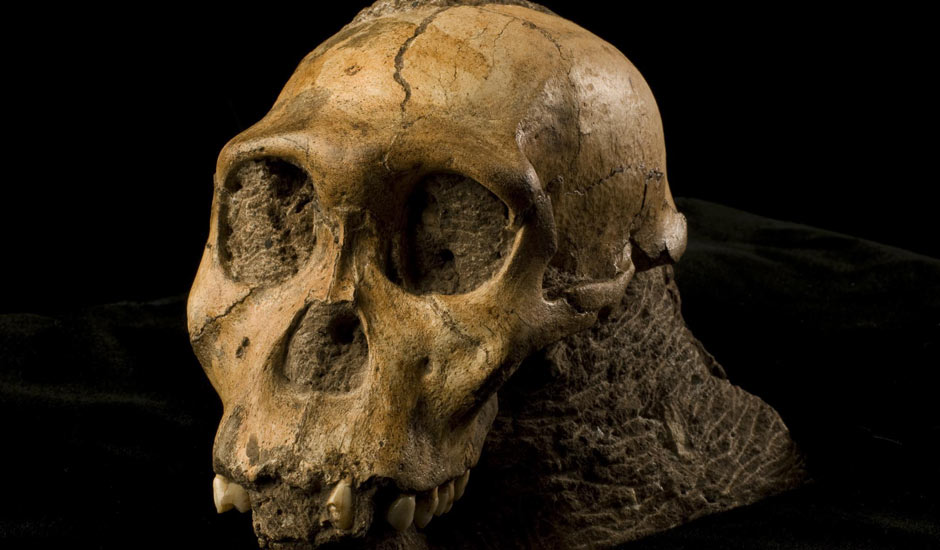BBC News Article

The remarkable remains of two ancient human-like creatures (hominids) have been found in South Africa.
The fossils of a female adult and a juvenile male - perhaps mother and son - are just under two million years old.
They were uncovered in cave deposits near Malapa in the Cradle of Humankind World Heritage Site near Johannesburg.
The team behind the discovery reports in the journal Science that the new species should be assigned the name Australopithecus sediba.
Its mosaic of features, the researchers believe, means it fills an important gap between older hominids and the group of more modern species known as Homo, which includes our own kind.
"It's at the point where we transition from an ape that walks on two legs to, effectively, us," lead scientist Professor Lee Berger of the University of the Witwatersrand told BBC News.
"I think that probably everyone is aware that this period of time - that period between 1.8 and just over two million years [ago] - is one of the most poorly represented in the entire early hominid fossil record. You're talking about a very small, very fragmentary record," he explained.
Rapid burial
Many scientists regard the Australopithecines as being directly ancestral to Homo but the precise placement of A. sediba in the human family tree is already proving controversial, with some scientists arguing the species may well be a Homo itself.
The Malapa creatures lived right on the cusp of the emergence of Homo species. Indeed, there are some fossils from East Africa thought to be Homo that are slightly older than the new specimens.
A. sediba has a fascinating mix of features - some archaic, some modern.
Its small teeth, projecting nose, very advanced pelvis, and long legs throw forward to more modern forms. And yet its very long arms and small brain case might echo the much older Australopithecine group to which Professor Berger and colleagues have assigned it.
The Malapa fossils were found within a metre or so of each other, suggesting they died at the same time or very soon after one another. It is entirely possible they were mother and son, says Professor Berger's group. At the very least, it seem reasonable to assume they knew each other and belonged to the same troupe, the team adds.
The scientists speculate the creatures either fell into the cave complex or became stuck in it. It is likely their bodies were then swept into an underground lake or pool, perhaps during a rainstorm.
Their bones were laid down with the remains of other dead animals, including a sabre-toothed cat, antelope, mice and rabbits. The fact that none of the bodies appear to have been scavenged indicates that all died suddenly and were entombed rapidly.
"We think that there must have been some sort of calamity taking place at the time that caused all of these fossils to come down together into the cave where they got trapped and ultimately buried," said team-member Professor Paul Dirks from James Cook University in Queensland, Australia.
All were preserved in the hard calcified clastic sediment that formed at the bottom of a water of water.
Vigorous debate about the significance of finds in the field of palaeoanthropology is common, and A. sediba has already generated much comment within the scientific community.
Professor Colin Groves, from the Australian National University, said his assessment of the Malapa hominids led him to conclude that they were actually a new species of Homo, not Australopithecus.
"In fact, the authors themselves pointed to certain similarities with early Homo, seeming even to admit that the predominance of its features were with Homo, only the small cranial capacity being really an "australopithecine" feature," he commented.
"But we now know of [the Indonesian 'Hobbit' species] Homo floresiensis with the cranial capacity more or less the same as the new species."
The richness of the fossil finds means the Malapa cave complex is likely to keep scientists busy for many years.
In addition to the two hominids reported in the journal Science, the remains of two further individuals are in the process of excavation.
The site was found by the team thanks to the "virtual globe" software Google Earth, which allowed the group to map and visualise the most promising fossil grounds in the World Heritage Site.
The first discovery of A. sediba remains was made in August 2008. The very first bone was picked up by Professor Berger's nine-year-old son, Matthew.
"I turned the rock over and I saw the clavicle sticking out - that's the collar bone. I didn't know what it was at first; I thought it was just an antelope," the youngster told BBC News.
"So I called my dad over and about five metres away he started swearing, and I was like 'what did I do wrong?' and he's like, 'nothing, nothing - you found a hominid'."
The scientists say they will hold a competition in South Africa to give the juvenile specimen a name, to help people identify better with the species, just as they can with the 3.2-million-year-old Australopithecus afarensis creature found in Ethiopia and known to the world simply as "Lucy".
The name "sediba" means "fountain" or "wellspring" in the Sesotho language spoken in South Africa.

